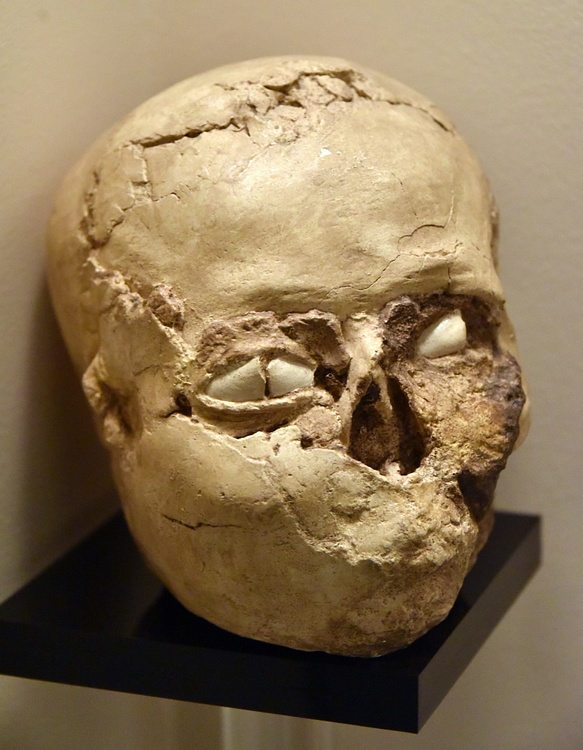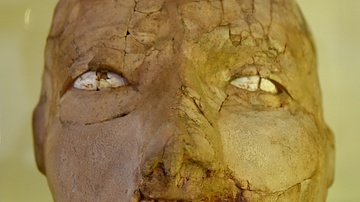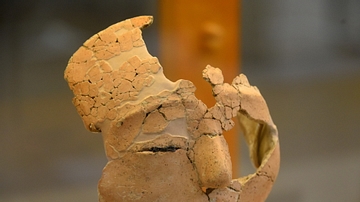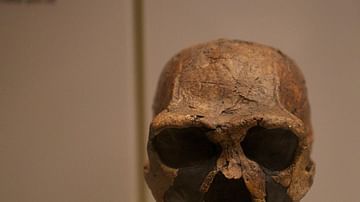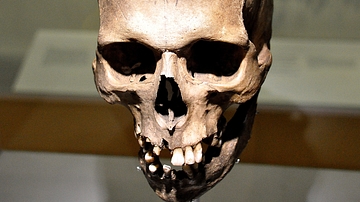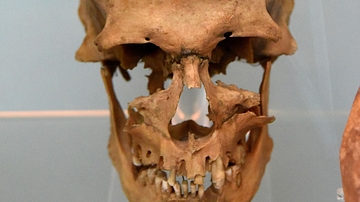Illustration
People invented plaster during the Neolithic period by burning limestone. This new material was used in daily life and for cultic practices. A new tradition also appeared then, that of plastering skulls of the deceased, which were removed after burial when the flesh had decayed. The face was molded onto the skull with plaster and shells were placed as eyes and lined with bitumen. These skulls were kept inside houses; therefore, they may represent an ancestral cult. Pre-Pottery Neolithic B, 8800-6900 BCE. From Jericho, modern-day Palestinian Territories. (The Jordan Museum, Amman, Jordan).
About the Author
Cite This Work
APA Style
Amin, O. S. M. (2019, February 19). Plastered Skull from Jericho. World History Encyclopedia. Retrieved from https://www.worldhistory.org/image/10055/plastered-skull-from-jericho/
Chicago Style
Amin, Osama Shukir Muhammed. "Plastered Skull from Jericho." World History Encyclopedia. Last modified February 19, 2019. https://www.worldhistory.org/image/10055/plastered-skull-from-jericho/.
MLA Style
Amin, Osama Shukir Muhammed. "Plastered Skull from Jericho." World History Encyclopedia. World History Encyclopedia, 19 Feb 2019, https://www.worldhistory.org/image/10055/plastered-skull-from-jericho/. Web. 05 Jul 2025.

